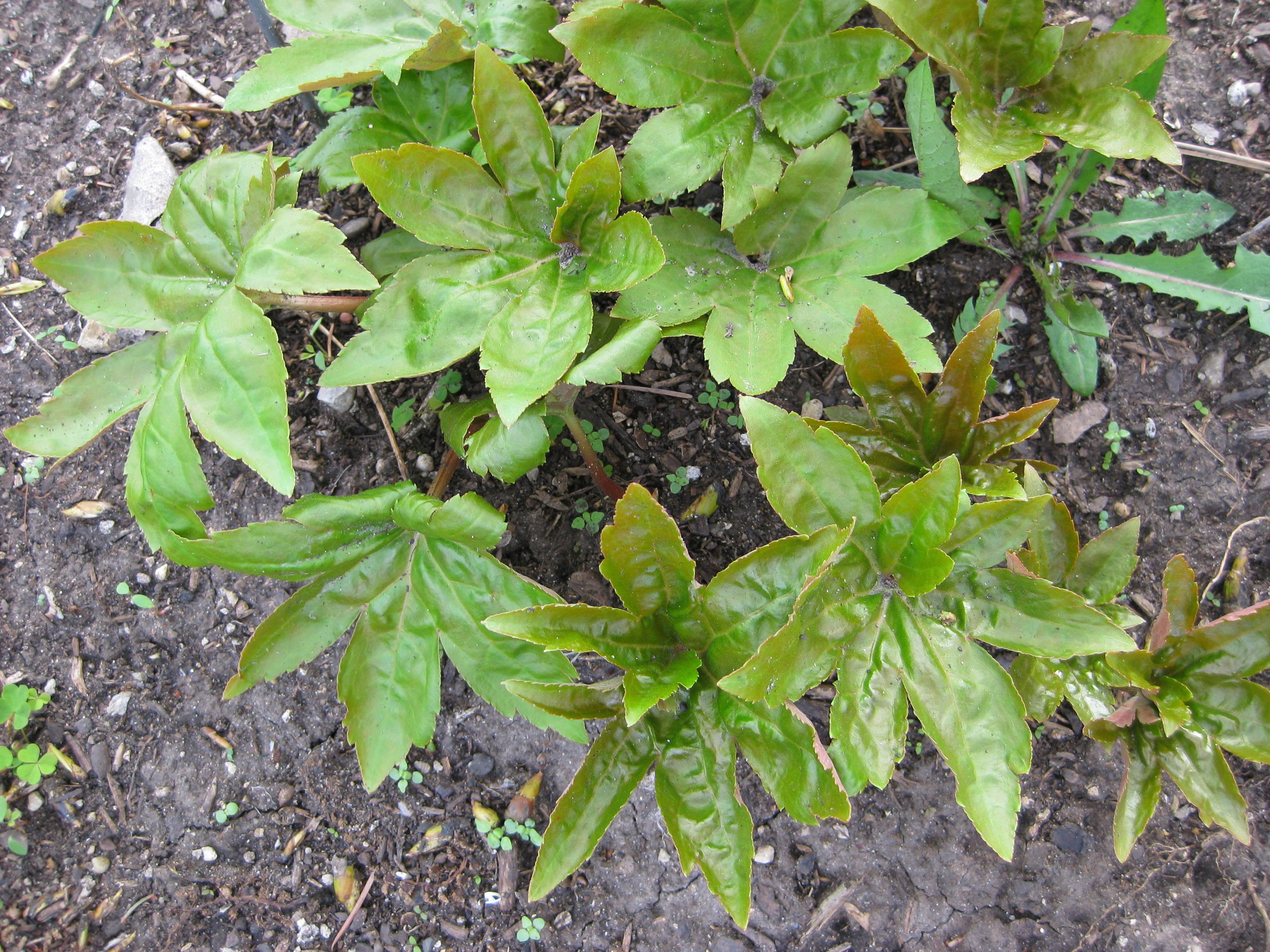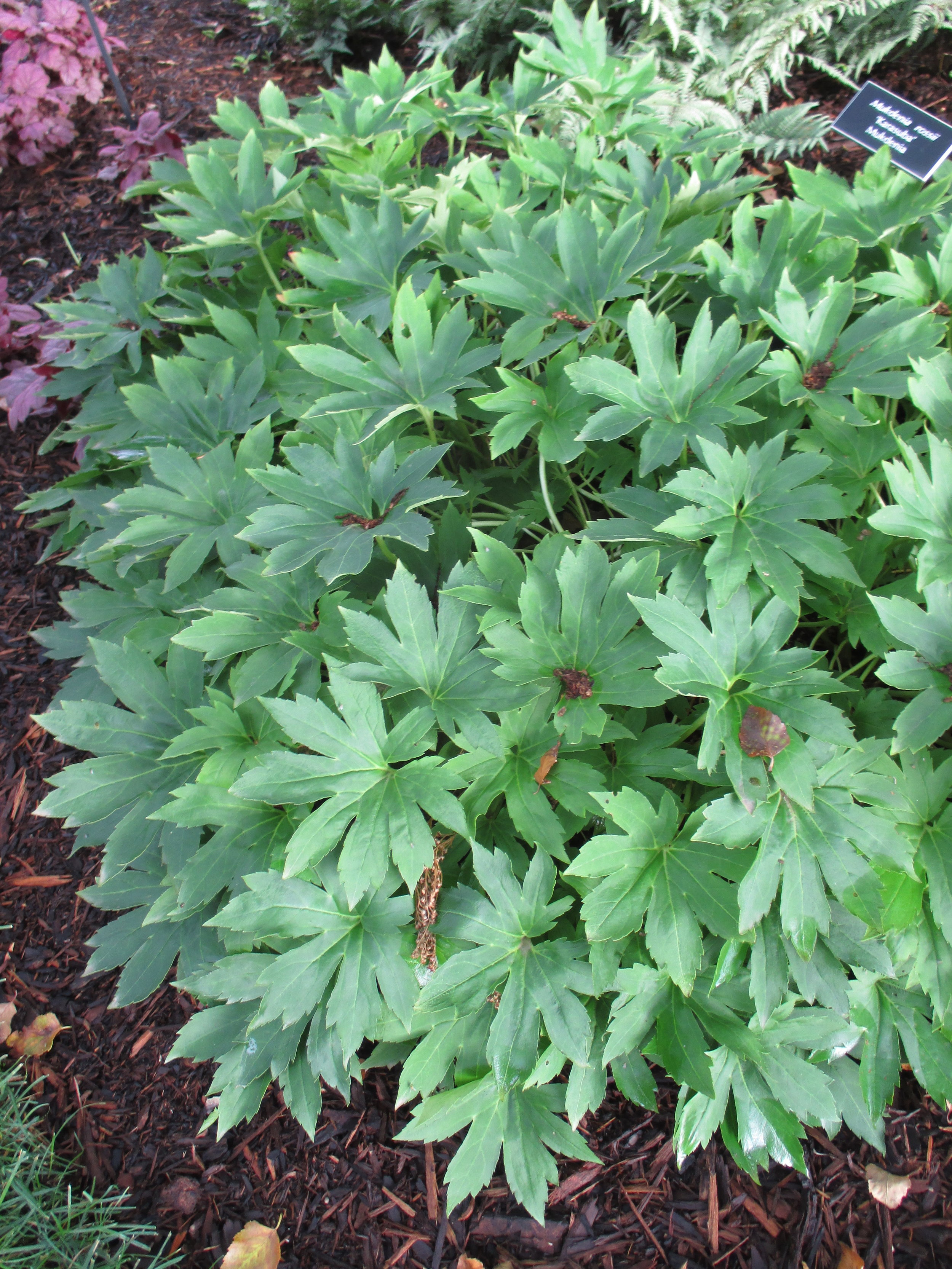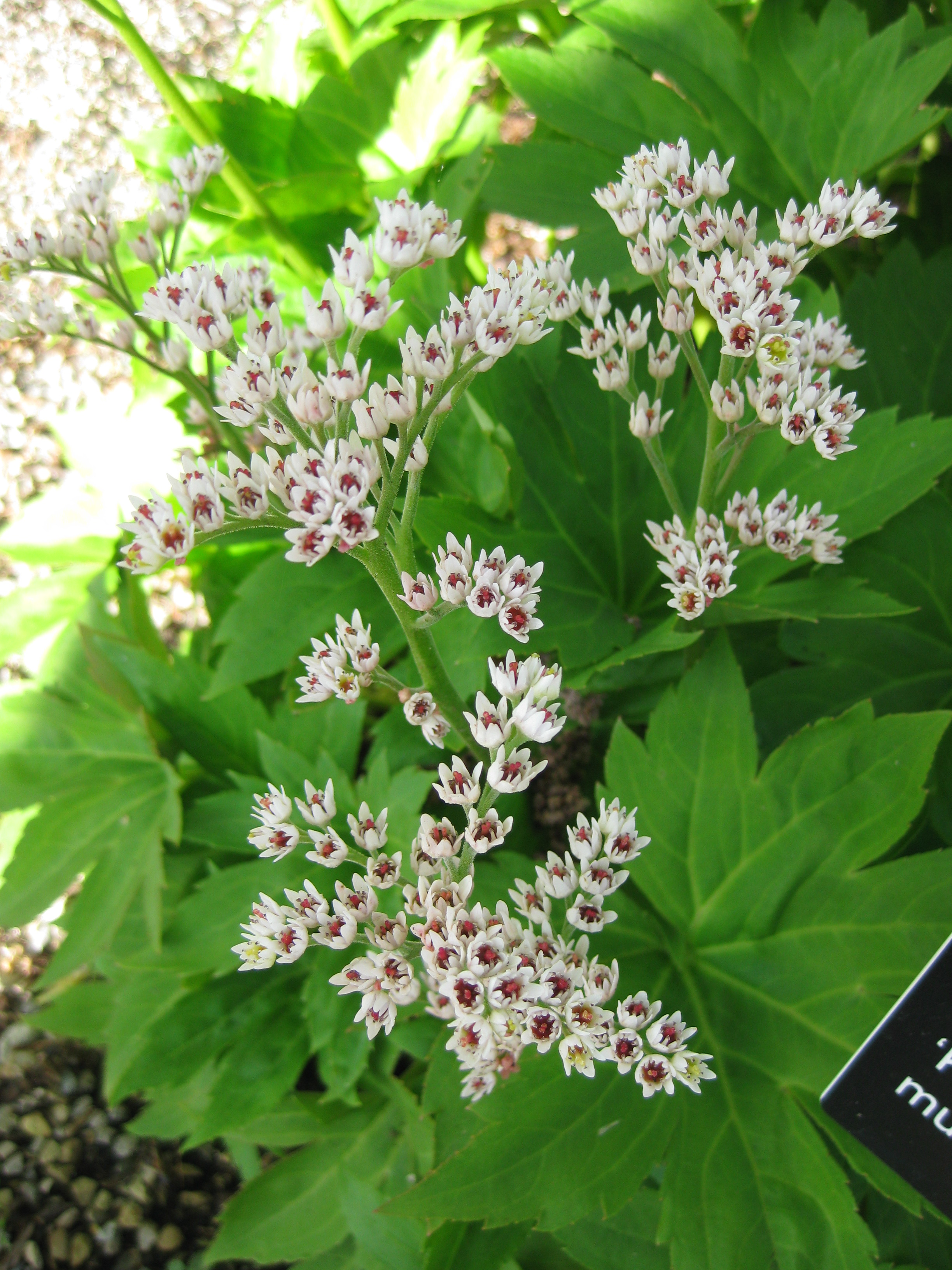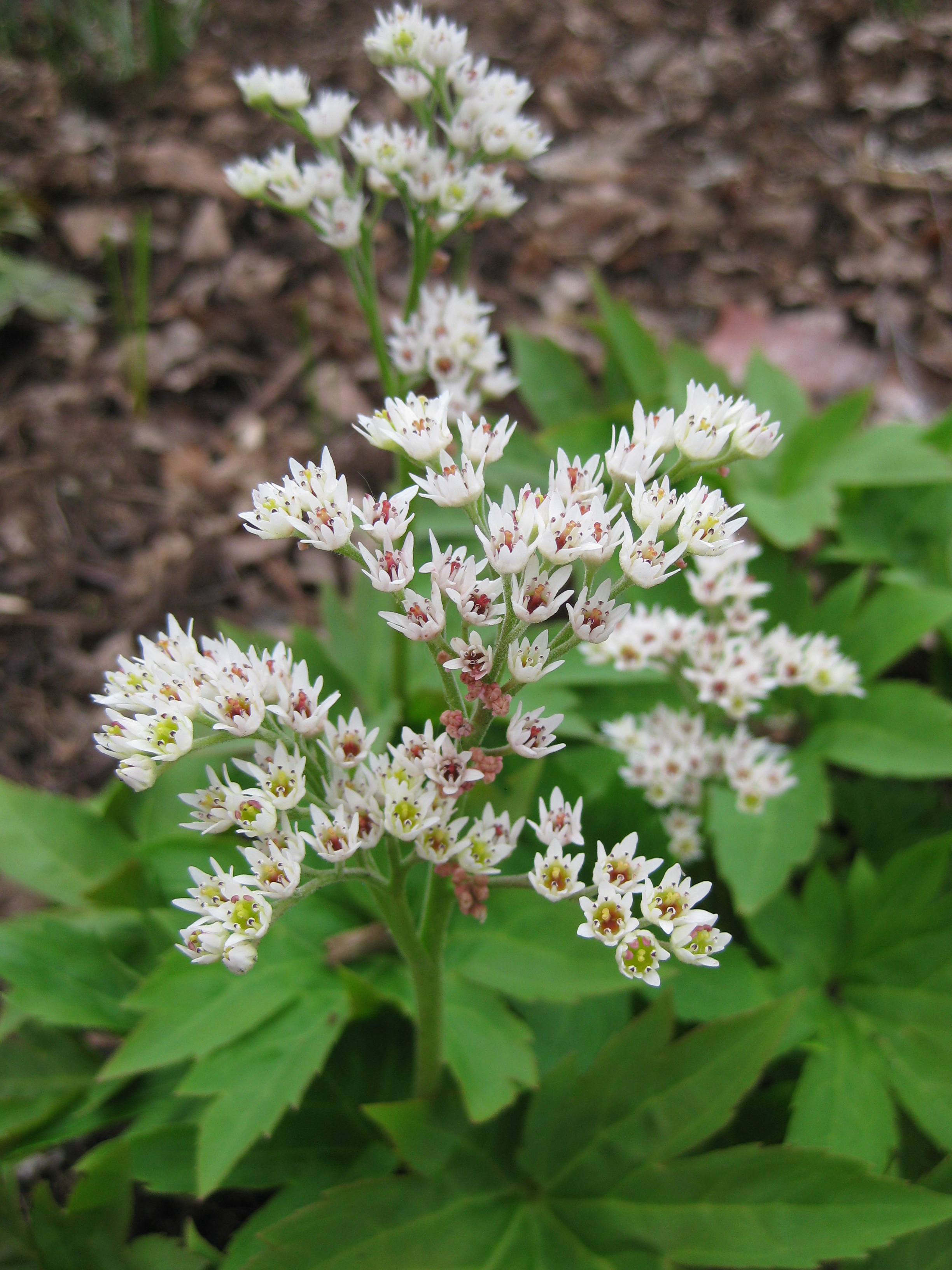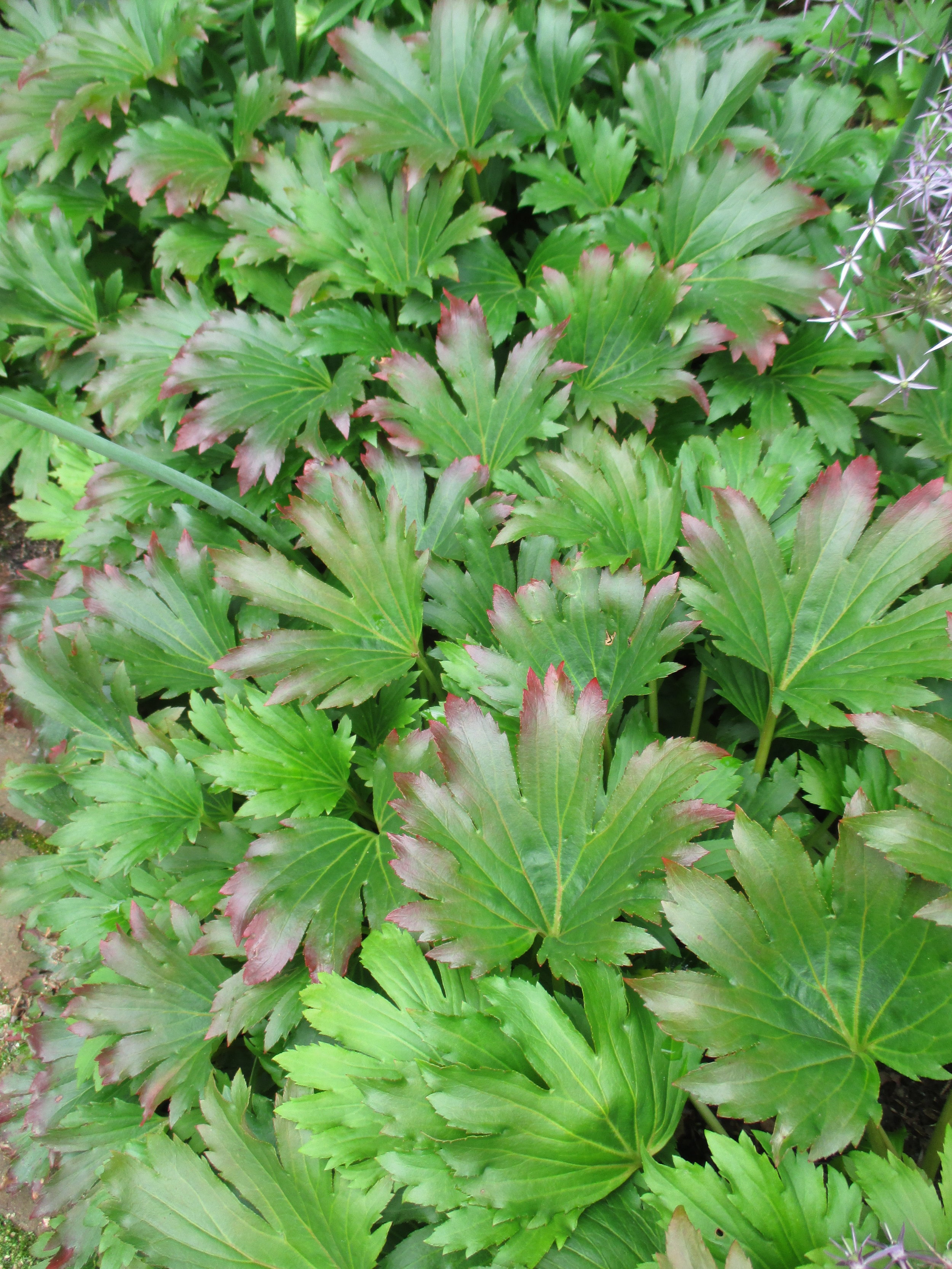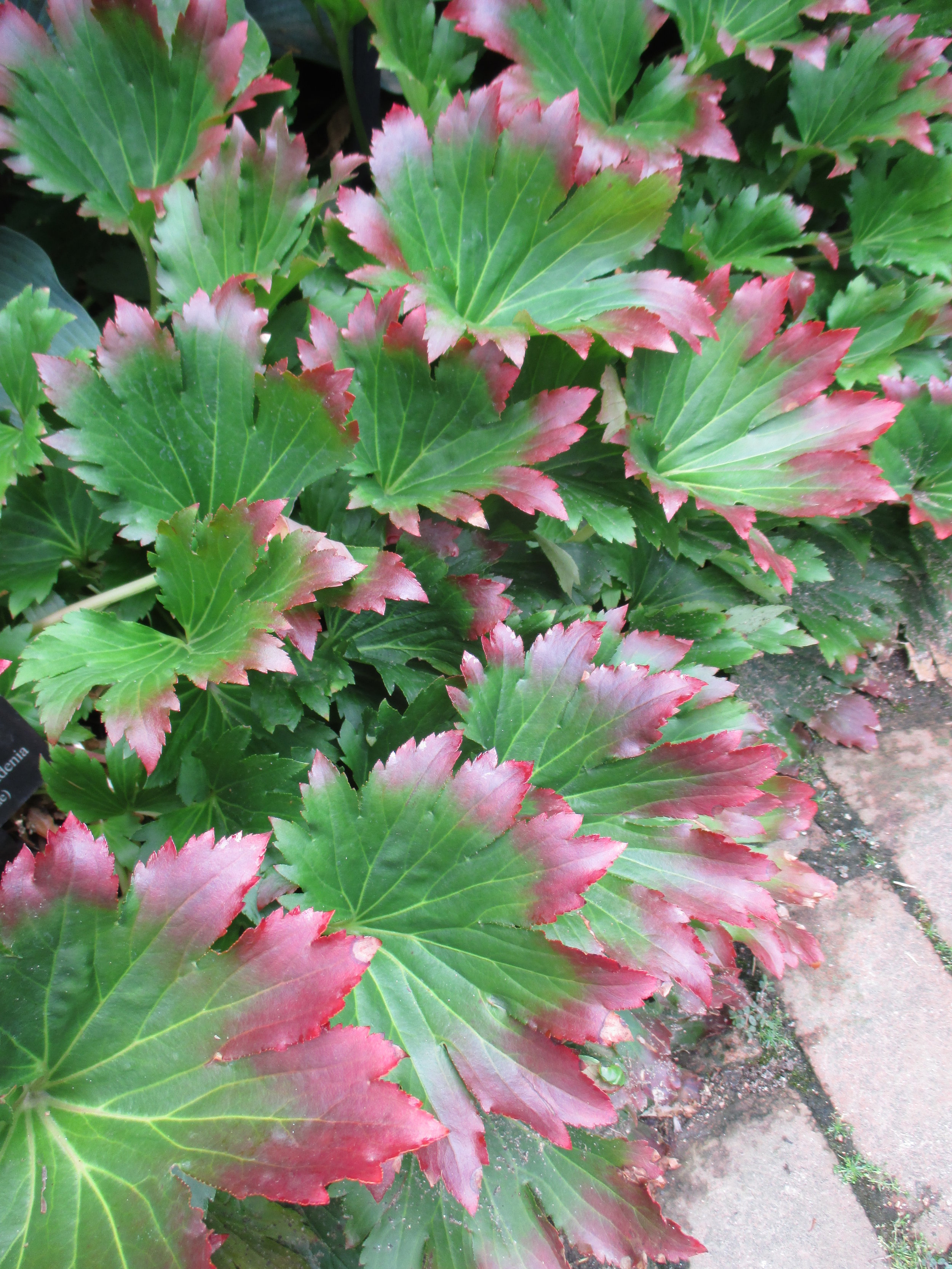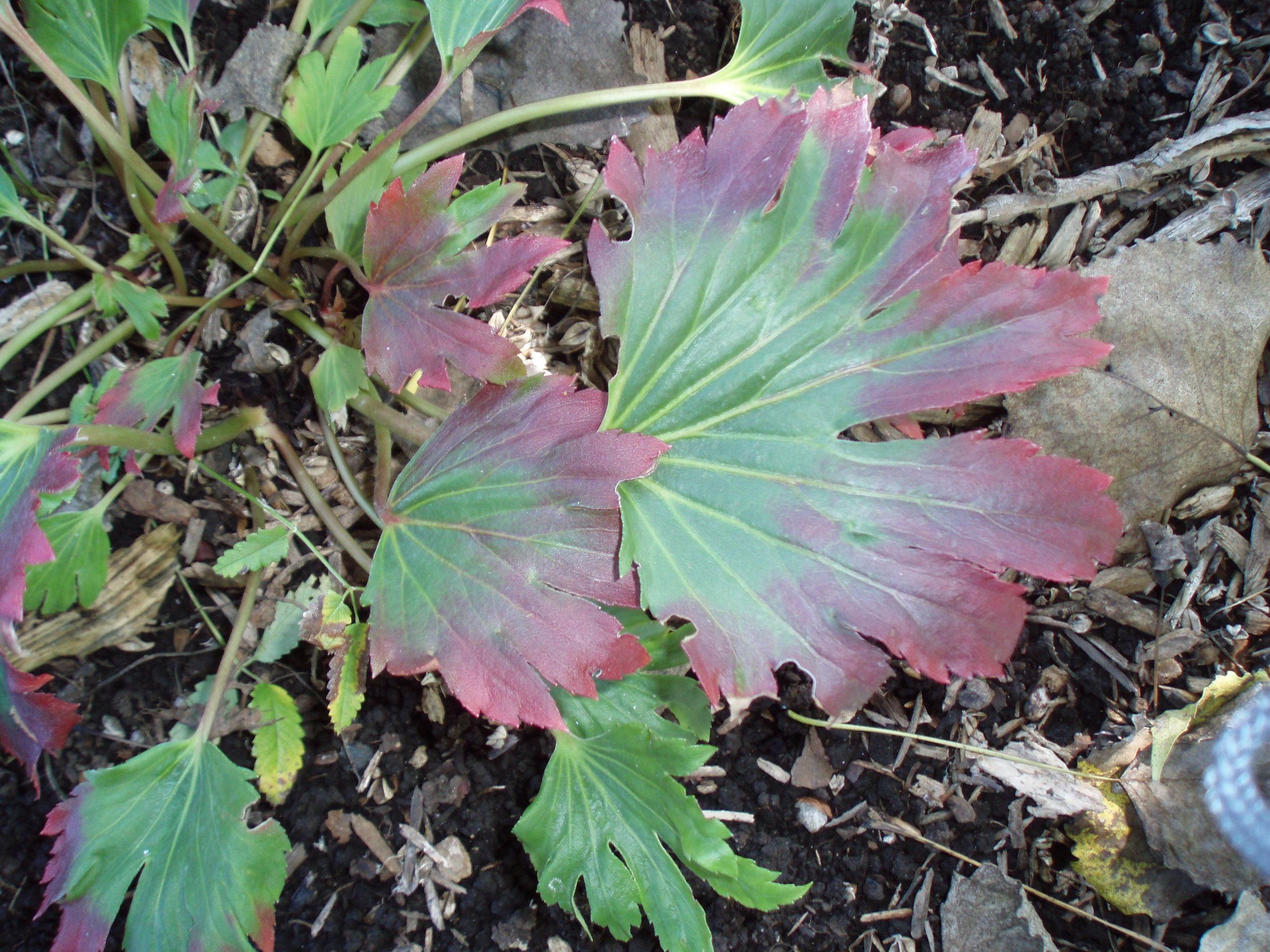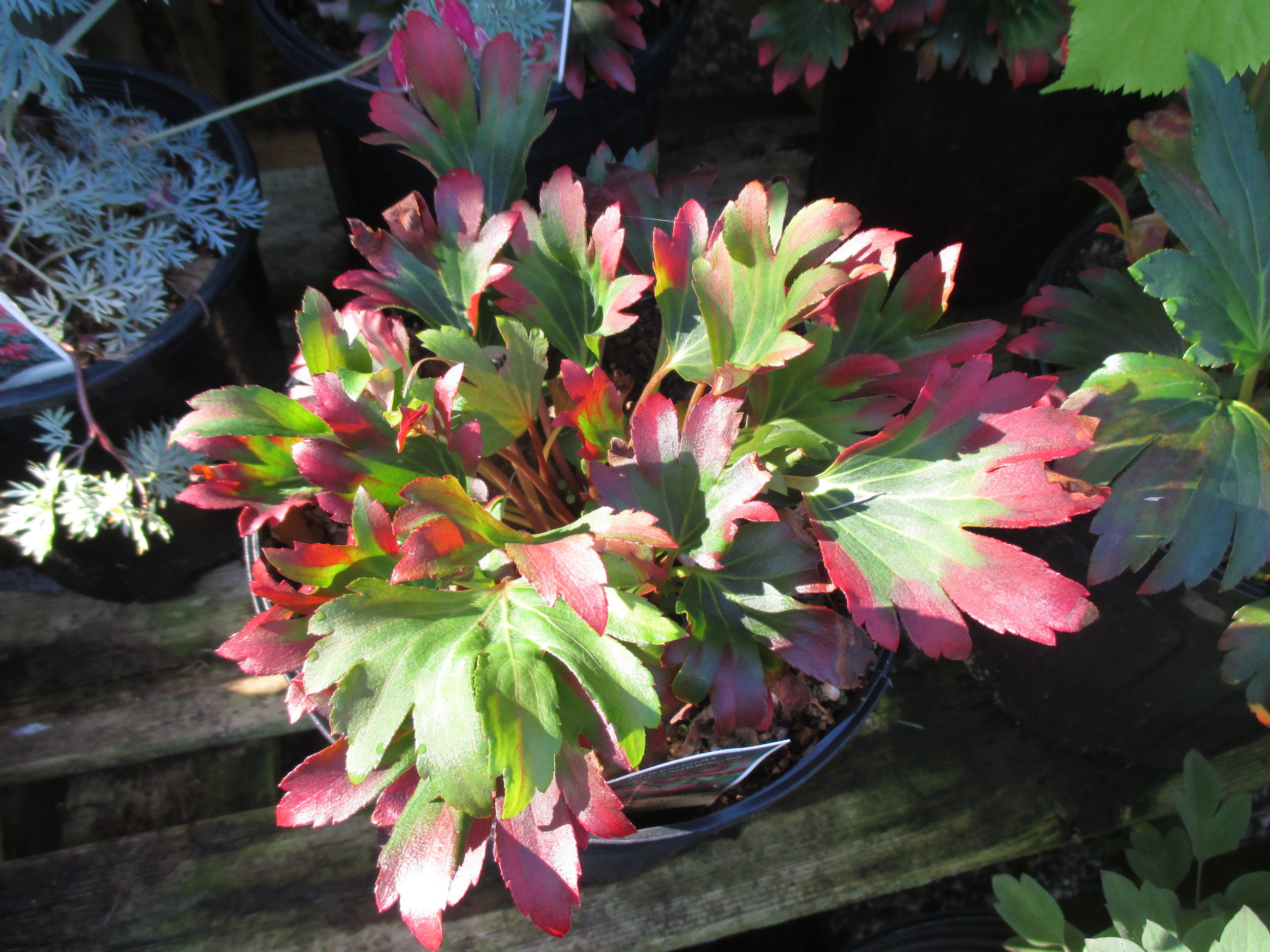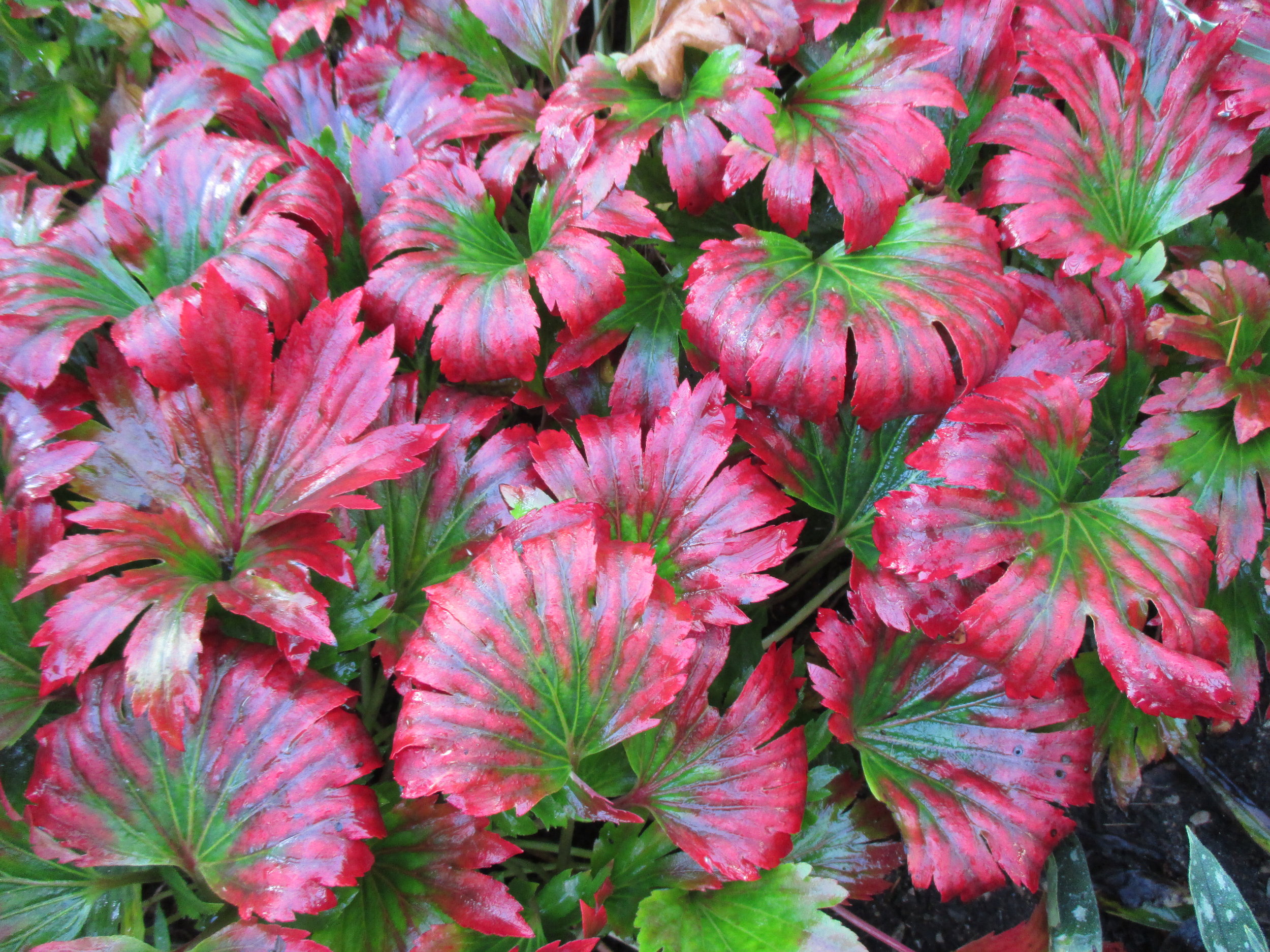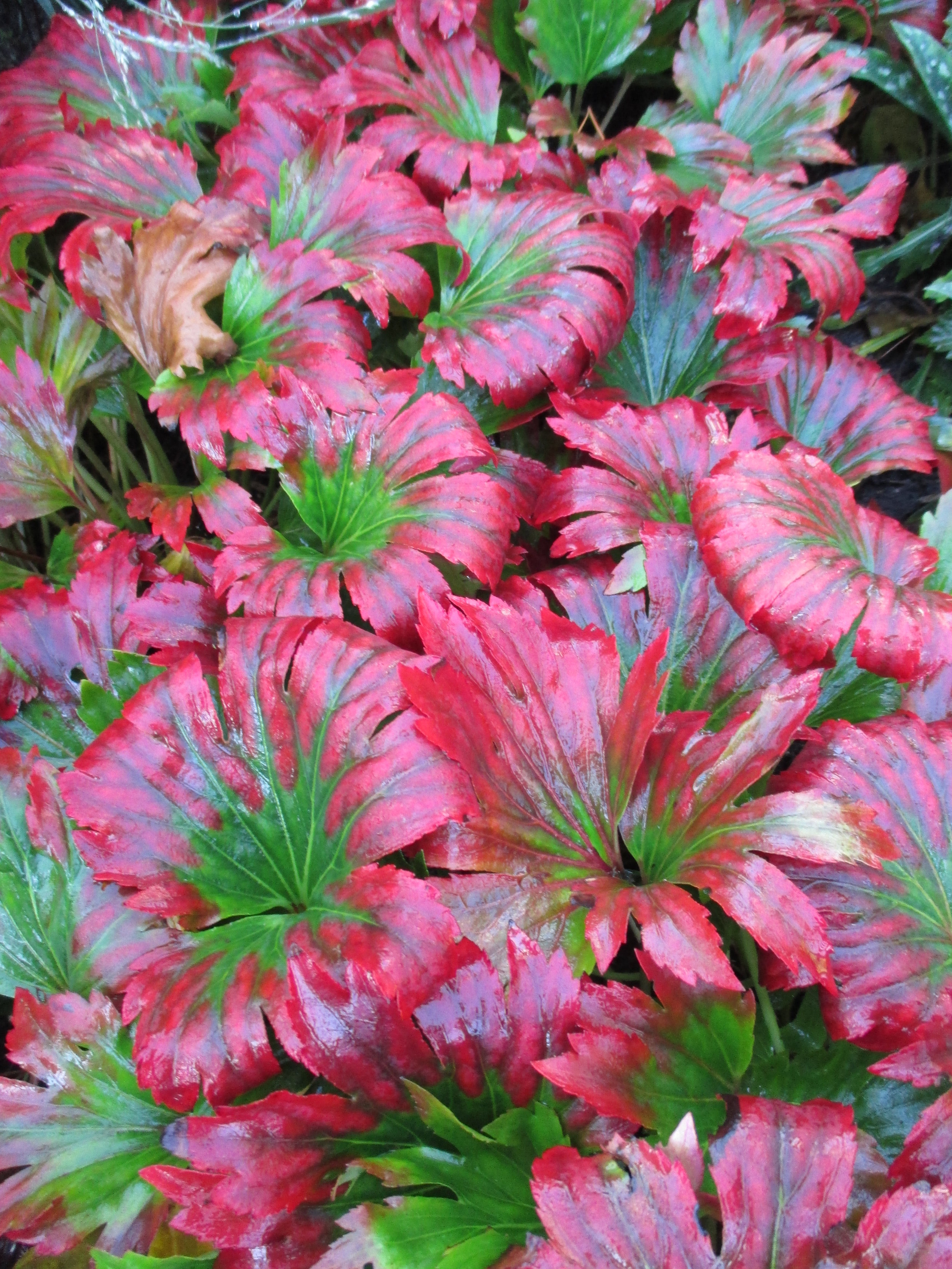Mukdenia is a Must Have!
Mukdenia as a plant name is definitely a mouthful to say but this perennial continues to become more popular and available every year. I’m not sure it has a common name but this coral bell (Heuchera) relative has become indispensable in the partly shaded garden. I first ran across this perennial (hardy to zone 4) about 11 years ago and have been consistently impressed with it over the years. I have seen it in many situations and quickly concluded it was “worth the space”! Included below is some information from a previous blog I did on this plant a couple years ago. This information addresses the cultural conditions preferred by this tough perennial that becomes more colorful later in the season with increasingly red foliage.
Mukdenia rossii is native to rocky slopes in China, Manchuria and Korea. This plant enjoys moist, well drained soils in part shade. Previously called Aceriphyllum, this perennial features fanned, maple-like leaves that, after emerging bronze-green and aging to a medium green, get increasing hints and streaks of red starting from the leaf tips. This color transformation, the primary feature of interest, goes from mid-summer well in to the fall. The early spring clusters of small, white, bell-shaped flowers are interesting for about 2 weeks but this is primarily a foliage perennial and is very underutilized in part shade gardens. Mature height is about 12″ with a width around 24″. The variety ‘Karasuba’ (seen in all these photos) is the same as the translated trade name of CRIMSON FANS and is becoming more available as mentioned above. The leaves turn almost entirely red by late October and I’ve seen specimens over 10 years old that have thrived in areas that don’t dry out (not drought tolerant!). This progression of coloration varies in intensity year after year and some degree of exposure to direct sunlight (late afternoon preferred) will result in more intense transitions. We occasionally see some slug damage on the foliage but very few other problems in terms of insects or diseases. Know how to ask for this plant by name! Add this one to your part-shade palette but keep it damp and happy!
